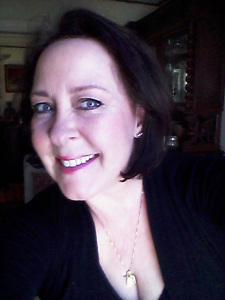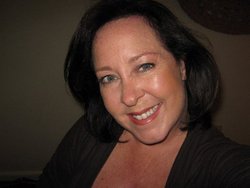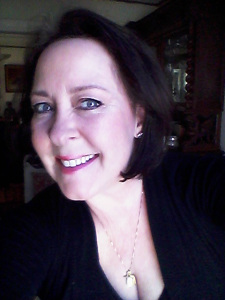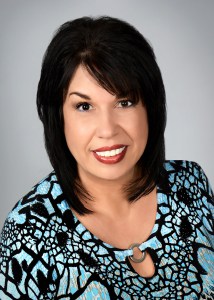Reblogged, October 7, 2015
http://livinlavidalatina.blogspot.com/2015/10/q-with-eleanor-parker-sapia.html

Historical novelist, Eleanor Parker Sapia was born in Puerto Rico and raised as an Army brat in the United States, Puerto Rico, and several European cities. As a child, she could be found drawing, writing short stories, and reading Nancy Drew books sitting on a tree branch. Eleanor’s life experiences as a painter, counselor, alternative health practitioner, a Spanish language social worker, and a refugee case worker, continue to inspire her writing. Eleanor loves introducing readers to strong, courageous Caribbean and Latin American women who lead humble yet extraordinary lives in extraordinary times. Her debut historical novel, A Decent Woman, set in turn of the century Puerto Rico, has garnered praise and international acclaim. She is a proud member of PENAmerica and the Historical Novel Society. A Decent Woman is July 2015 Book of the Month for Las Comadres and Friends National Latino Book Club.
Eleanor is currently writing her second historical novel titled, The Island of Goats, set in Puerto Rico, Spain, and Southern France. When Eleanor is not writing, she loves facilitating creativity groups, and tells herself she is making plans to walk El Camino de Santiago a second time. Eleanor has two loving grown children, and currently lives in wild and wonderful West Virginia.
Synopsis: A DECENT WOMAN
Ponce, Puerto Rico, at the turn of the century: Ana Belén Opaku, an Afro-Cuban born into slavery, is a proud midwife with a tempestuous past. After testifying at an infanticide trial, Ana is forced to reveal a dark secret from her past, but continues to hide an even more sinister one. Pitted against the parish priest, Padre Vicénte, and young Doctór Héctor Rivera, Ana must battle to preserve her twenty-five year career as the only midwife in La Playa.
Serafina is a respectable young widow with two small children, who marries an older, wealthy merchant from a distinguished family. A crime against Serafina during her last pregnancy forever bonds her to Ana in an ill-conceived plan to avoid a scandal and preserve Serafina’s honor.
Set against the combustive backdrop of a chauvinistic society, where women are treated as possessions, A Decent Woman is the provocative story of these two women as they battle for their dignity and for love against the pain of betrayal and social change

- What inspired you to write A Decent Woman?
I was initially inspired by a tribute I wrote on the occasion of my maternal grandmother’s 90th birthday, and by my grandmother’s stories about her midwife, Ana, who caught my mother, two aunts, and an uncle. I’ve always said Ana whispered her story in my ear. She was an Afro-Caribbean midwife of unknown origins, who my relatives said liked her rum and a cigar after every birth—a very colorful woman. Ultimately, Ana’s story was the inspiration. I wish I’d met her.
After writing the tribute for my Puerto Rican grandmother, which included stories about her childhood and adulthood on the island, I realized how much I knew about the daily lives of women in the 1900’s. Through my research, I was further inspired by the extraordinary lives of ordinary women during a complex and tempestuous time in the island’s history. There are many books written about Puerto Rican women’s experiences after leaving the island, but I wasn’t aware of any books in English with stories such as mine, about the women who stayed behind. I wrote what I wanted to read.
- How do Ana and Serafina relate to each other in the story?
In chapter one, midwife Ana Belén catches sixteen-year old, Serafina Martinez’ first child as a tropical storm threatens the little Martínez house. The women immediately bond, especially Serafina to Ana as her mother died in Hurricane San Ciriaco two years prior. Ana is very fond of Serafina, but she is afraid of getting too close to the young woman for many reasons: her childhood as a slave; Serafina’s young age; Ana’s place in society; and because of the secret Ana brought to Puerto Rico from Cuba twenty years before, which if discovered, could destroy all Ana has worked for.
Through sharing life experiences, despite their different places in society, and after a crime against Serafina that brings them together in an ill-conceived plan to avenge Serafina’s honor and protect her marriage, the women become close friends, close as sisters. Not only was Ana the young woman’s confidante andcomadre, midwife, they are comadres of the heart. Their friendship continues until the end of the book.
- What are some of the main socio-economic issues that you explore in this book and why did you explore them?
I explored the issues of racism, misogyny, and elitism, as well as crimes against women and abuse within marriage and relationships. I thought it was important to portray life as it was for women of all socio-economic levels—the rich and the poor, white and black, the educated and uneducated.
Women suffered abuse at the hands of men at home, in the workplace, and in the street. Women struggled to feed their children and make ends meet at home with low-paying jobs, often going hungry themselves. They fought other women, vying for male attention, which at the time, was the only way a woman could survive in the world—with a man’s protection and money. Consequently, women were pitted one against the other. In some places in the world, this continues.
And finally, the US Department of Health sterilized hundreds of Puerto Rican women (more women in later years), against their will and by not telling them what procedures were being done on them. I believe once you know a truth—and this truth, a shocking truth in our history as a colony—you must tell it. If we deny or ignore a truth, it will revisit us. I didn’t and I don’t shy away from the ugly bits of life or the past. The women of 1900 Puerto Rico needed a voice.
- What do you hope readers will gain from your book?
As with viewing a work of art, what the viewer/reader ‘sees’ is subjective. We filter our life experiences through everything we read, hear, observe, and experience, and come to an understanding. We each take what we need and discard what we don’t need in most situations. It’s no different with books. So, it’s tough to say what I hope readers will gain from my book. However, I do hope readers who usually shy away from historical novels will see through my story that people of the past weren’t that different from us. Our ancestors dealt with the same pains, tragedies, and joys in life as we do today. Life was harder, of course, because people had few modern conveniences and fewer opportunities, especially women, and that is still true of many people around the world today.
One reader loved that I showed how important women friendships are throughout a woman’s life. I agree. Women should continue uplifting their fellow women when they can. There’s plenty to go around.
- What inspired you to be a writer?
I was an exhibiting artist for over twenty-five years before discovering my passion for writing books. One day, the paint brush and canvas weren’t ‘saying’ what I wanted to convey. I began writing on the dry, painted canvas with a colored pencil. Soon, I wrote personal thoughts and quotes, on the painted images. Words appeared on the side of painted images, around the edges, until finally making their way inside the piece. It was then the little light illuminated in my brain—I needed words as well as paint to tell my stories; to express what I had in my heart and soul. I believe I inspired myself. It was then my inner world opened up, making connections where up until that point, I’d kept separate.
After a few years, writing took over, and I wrote the first draft manuscript of A Decent Woman. Looking back, however, I see my artist side revealed in how I describe settings, characters, and objects in my stories; the play or light and color and texture—that all comes from an art background. I now paint to relax, as a reminder that I am a creative person, when inspiration strikes, and when I get stuck during the writing process. Writing has become an obsession, and I am happy when I visit with my old friend, painting.
- What do you like best and what do you like least about being a writer?
I love being alone in my head with my characters, and seeing where they lead me and the story. What I like least is when I must be on social media instead of writing. I understand the importance of social media to an author and love getting to know my readers, I really do, but I much prefer sitting at my writing desk. I came to writing in my late forties—I feel the urgency to get my stories to readers before it’s too late!
- Who are some of your favorite authors?
A few of my favorites are, Gabriel Garcia Marquez, Isabel Allende, Jack Remick, Chitra Banerjee Divakaruni, Milan Kundera, and Cormac McCarthy.
- If your book would be turned into a movie, who would you imagine playing the part of the main character? (Actor can be ANYONE, living or dead.)
I love this question! I’ve always thought A Decent Woman would make a great film. The incredible actress Viola Davis would be perfect to play adult Ana and Selma Hayak as the adult Serafina. For the younger Ana, I would love to see Lupita Nyong’o and Melanie Iglesias as young Serafina.
- Are you working on anything right now?
Yes, thanks for asking. I’m currently writing a novel called The Island of Goats, which begins in 1920 Puerto Rico, and moves to the pilgrimage path of El Camino de Santiago de Compostela in Spain, and then to Southern France. It is the story of two young women, Magdalena and Nadya, who will meet and forge an unlikely friendship on the medieval pilgrimage route, while trying to make sense of a new world before WWII.
My first published novel, A Decent Woman will always have a special place in my heart, but I am very excited about the second book.
- And, finally, what do you think is in store for the future of Latino literature?
Latino literature has evolved for hundreds of years, and will continue to evolve as Latinos in the United States continue writing culturally-rich stories in Spanish and in English, or begin writing books in genres where there are few Latino writers. I’ve read comments from Latino writers who are tired of reading stories of one more Latino/a drug addict, prostitutes, or another story of coming into the United States. I say just write. Tell whatever story is in your heart.
What comes to mind when I think of the future of Latino literature is the need for more Latinos in publishing and more Latino agents, who specialize in Latino literature. It’s difficult for all writers to get published, and my personal experience was that I had an extra hurdle to get over—writing a historical novel about a diverse heroine in 1900 Puerto Rico—not easy to sell, but as it turned out, Ana’s journey has been embraced by readers. I’m glad I didn’t give up, and I still need an agent!
I’d like to think that the future of Latino literature looks bright and promising.
Thank you for the opportunity to share with your readers. Happy writing to all!
A DECENT WOMAN is available on Amazon
amazon.com/-/e/B00U05ZO9M
and at La Casa Azul Bookstore,143 E. 103rd Street New York, NY 10029 (212) 426-2626 http://www.lacasaazulbookstore.com/
Website: http://www.eleanorparkersapia.com
Author Blog: http://www.thewritinglifeeparker.wordpress.com
Twitter: @eleanorparkerwv
Facebook: http://www.facebook.com/eleanorparkersapia
LinkedIn: https://www.linkedin.com/profile/view?id=252952928&trk=nav_responsive_tab_profile_pic




















